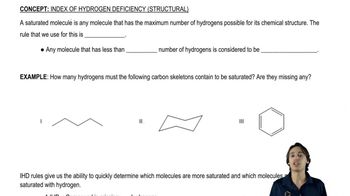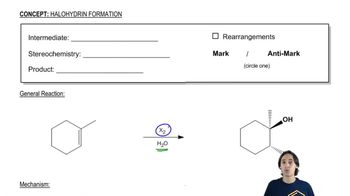Predict the major product(s) for each reaction. Include stereochemistry where appropriate.
a. 1-methylcyclohexene + Cl2/H2O
b. 2-methylbut-2-ene + Br2/H2O

 Verified step by step guidance
Verified step by step guidance Verified video answer for a similar problem:
Verified video answer for a similar problem:



 1:44m
1:44mMaster General properties of halohydrin formation. with a bite sized video explanation from Johnny
Start learning